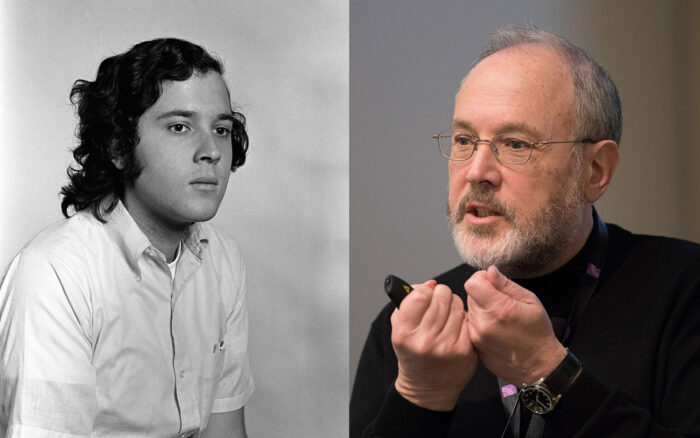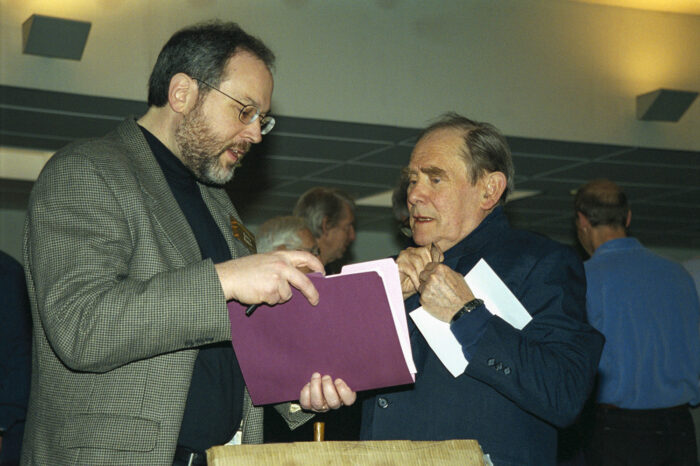Gerry Rubin: Looking Back
Gerry Rubin was a PhD student in the Cell Biology Division from 1971-1974. For the December 2019 LMB Alumni Newsletter, he shares some memories and anecdotes about his time at the LMB and the impact it had on him.

I began my graduate career at the LMB in the fall of 1971 after getting my first degree in biology from MIT. My time at the LMB imprinted on me a view of how science should be done and indeed, of what scientists do, that has motivated everything I have done in my career. Only many years later did I fully realize how impoverished most scientists are from never having observed-and been inspired by-scientists like Brenner, Perutz and Sanger working in the lab every day with their own hands on their own problems. It is a world that is difficult to comprehend or believe possible if you have not witnessed it.
Perhaps my most vivid memory from my first year was of being joined by Michael Fuller and members of the Cambridge fire brigade at 10 PM on Xmas eve 1971 after I set off the fire alarm by opening an autoclave door prematurely. My own PhD was fairly pedestrian, but I am proud that I still, 45 years later, have the LMB’s shortest thesis at 40 pages.
I began working on the fruit fly, Drosophila, in 1974 as a postdoctoral fellow in the laboratory of Dave Hogness at Stanford, where I participated in some of the earliest studies of gene organization using the newly developed recombinant DNA methods.
In 1977, I started my first independent group and for the next 23 years ran an academic research laboratory. This phase of my career began at Harvard Medical School, then moved in 1980 to Carnegie Institution of Science’s Department of Embryology and then again in 1983 to Berkeley where I assumed the John D. MacArthur Professorship. My research interests during this time included studies of the structure and biology of transposable elements and the molecular mechanisms of cell fate determination and signal transduction. In 1982, Allan Spradling and I developed methods for making transgenic Drosophila, the first successful germ-line genetic engineering of a multicellular animal and probably my most important scientific contribution. I was also fortunate to have been able to mentor over 40 graduate students and postdoctoral fellows who have gone on to run their own research groups.
I got my introduction to management from leading the publicly funded effort to sequence the Drosophila genome. That experience taught me that, unlike nearly all of my colleagues, I enjoyed management and the challenge of bringing people together to accomplish goals too large for individual laboratories.
An opportunity to make a career shift came when I accepted a position as a vice president of the Howard Hughes Medical Institute in 2000 and began to wind down my research presence at Berkeley. From 2002 to 2006 I focused almost exclusively on conceiving and establishing HHMI’s Janelia Research Campus, participating in activities ranging from architectural design, developing the desired work culture and sociology, planning the scientific program, and recruiting staff. The influence of the LMB was pervasive, often conveyed by Sydney Brenner.

I was appointed Janelia’s first director in 2003, a position I will soon relinquish after 17 years. This has been an immensely satisfying endeavor and has allowed me to help other scientists experience at least some of what I loved about the LMB.
During my time as director I also ran a small research lab focused on the neurobiology of Drosophila with an emphasis on tool development and neuroanatomy. I look forward to continuing these efforts and, inspired by my LMB heroes, working in the laboratory.
Gerry Rubin, December 2019